Eucrites
The Eucrites are named for a Greek word meaning "easily
distinguished". Representing the most common class of achondrites,
more than 100 eucrites are known, excluding all probable pairings.
Although they are easily distinguished from chondrites, they closely
resemble terrestrial basalts. Actually, eucrites are extraterrestrial
basalts, volcanic rocks of magmatic origin, representing the crust of
their parent body, Vesta. They are primarily composed of the calcium-poor
pyroxene, pigeonite, and the calcium-rich plagioclase, anorthite.
Additionally, eucrites often contain accessory minerals such as silica,
chromite, troilite, and nickel-iron metal. Based on mineralogical and
chemical differences, the eucrites have been further divided into three
distinct subgroups: the non-cumulate group, the cumulate
group, and the polymict group.
|
Igdi
Found : February 2000, Morocco
TKW 1,470 g
Monomict eucrite
Nuevo Laredo trend!
|
|
|
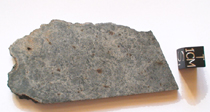 
|
|
|
|
Igdi 00
Large slice, with unique matrix
22.12 gr
$ 1770
|
|
|
|
|
|
|
|
Igdi 01
Endcut With fusion crust
38.62 gr
$ 3000
|
|
|
|
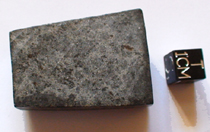  |
|
|
|
|
|
|
 
|
|
|
|
Igdi 02
Very thin endcut
13.86 gr
$ 1100
|
|
|
|
|
|
|
|
Igdi 03
Slice with patch of fusion crust
7.07 gr
Price
on request
|
|
|
|
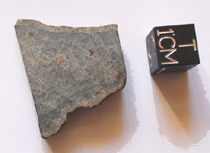  |
|
|
|
|
|
|
 
|
|
|
|
Igdi 04
Slice with crust
3.84 gr
SOLD
|
|
|
|
Igdi 05
Endcut with crust
2.70 gr
$ 220
|
|
|
|
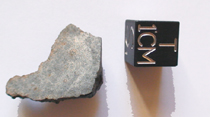 
|
|
|
|
|
|
|
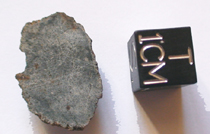 
|
|
|
|
Igdi 06
Small endcut
1.80gr
SOLD
|
|
|
|
|
|
|
|
Igdi 07
thick slice
1.35 gr
$ 120
|
|
|
|
 
|
|
|
|
|
|
|
 
|
|
|
|
Igdi 08
thick slice
1.09 gr
$ 100
|
|
|
|
|
|
|
|
Igdi 09
thin slice
0.59 gr
$ 70
|
|
|
|
 
|
|
|
|
|
|
|
|
|
|
|
|
|
|
|
|
|
|
|
|
|
|
|
|
|
|
|
|
|
|
|
|